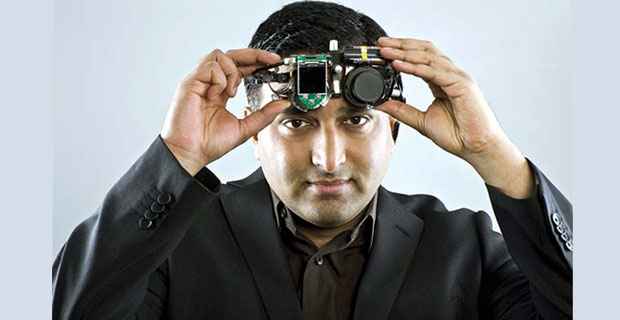Prestigious awards
Two Indo-American scientists from Massachusetts Institute of Technology (MIT) have been conferred with prestigious awards for their path-breaking inventions Nasik-born Ramesh Raskar, an imaging scientist and inventor at MIT, has been awarded the $500,000 Lemelson-MIT Prize 2016, it was announced at Cambridge, in Massachusetts, in September.
“Everyone has the power to solve problems and through peer-to-peer co-invention and purposeful collaboration, we can solve problems that will impact billions of lives,” observed Raskar, who is also Associate Professor at MIT. 
He plans to use a portion of the Lemelson-MIT Prize money to launch a new effort using peer-to-peer invention platforms that offer new approaches for helping young people in multiple countries to co-invent in a collaborative way, the statement read.
A doctorate from Stanford University in April 2015 and a graduate in electrical engineering from Indian Institute of Technology (IIT), Kanpur, Bharadia, 28, who hails from Ichalkarnji in Maharashtra’s Kolhapur district, has been awarded for his contribution to radio waves.
“Bharadia has been chosen for the 2016 Paul Baran Young Scholar Award for his contribution to send and receive radio (wireless) signals, including mobile telephony and data on the same channel (wave),” the Marconi Society said in a statement. “Bharadia’s research disproved a long-held assumption that it is not possible for a radio to receive and transmit on the same frequency band because of the resulting interference,” the statement said.
The Marconi young scholar award includes $4,000 (Rs. 2,67,870) prize and expenses to attend its annual awards event. He will receive the award at a ceremony in Mountain View, California, on November 2. Bharadia’s technology can be used in India to build relays which can listen to signals from a cellular tower, transmit them instantly and extend the range across the country. It also has the potential for multiple applications such as building novel wireless imaging that can enable driverless cars ride in severe weather conditions and help blind people to navigate indoors.
According to his Stanford PhD guide Sachin Katti, Bharadia’s work enables a host of new applications, from low-power Internet of Things (IoT) connectivity to motion tracking.











Comments.